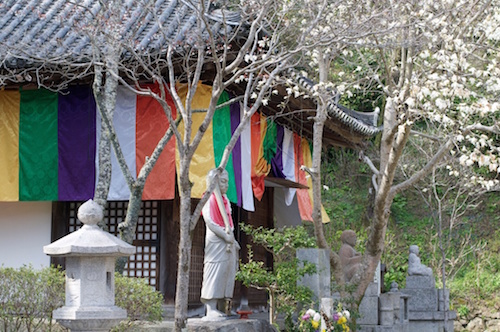139. The "Color" Radical: 色
The 色 kanji, which primarily means "color," represents something rather ... off-color! According to Henshall in his newer edition, this pictograph shows "a man bending over another bent person," denoting sexual intercourse!
He adds that the lower element also has a phonetic role, by which I suppose he means the stroke swooping across the bottom.
So it is that the autonomous 色 character has extended meanings that include "sexual desire," as Henshall puts it, or "sensual pleasure," as I've worded it here:
色 (145: color; facial expression or tone; sensual pleasure; character, feature)
When I learned this kanji eons ago, I told my teacher that I realized it had a sexual side, playing a role in several terms about love and lust. She shook her head vehemently and said it wasn't true at all. A classmate said he agreed with me, having found much the same thing. Again the teacher did her best to quash that line of thinking. It's hard to know just what was going on there!

Photo Credit: Christopher Acheson
Bright colors at Hasedera, a Buddhist temple in Sakurai City, which is in Nara Prefecture on Honshu.
The Names of the 色 Radical
The 色 kanji carries the Joyo kun-yomi いろ, which is the only Japanese name of the 色 radical. Similarly, it has only one English name, "color." That's as simple as it gets in the kanji world. The same goes for the way this six-stroke radical has no variant shapes.
The Role of 色 in 艶
The 色 radical is on duty in just two Joyo kanji, 色 and this one:
艶 (1966: glossy; sexy, sensual)
But according to Henshall, 色 was not originally part of 艶. Instead, 盍 occupied the right side, depicting a "lidded container with something piled up inside." The 豊 on the left represented "abundant (grain, etc.)." The two halves combined to mean either "abundant offerings" or "abundant good looks," depending on which scholar you ask and which stage of the character's evolution they're assessing.

